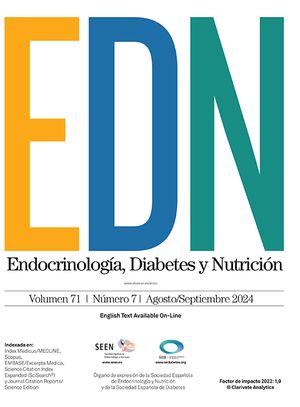La estimación de la grasa corporal tiene una importancia creciente a escala clínica. El objetivo de este estudio es evaluar la influencia de factores clínicos y biológicos en la medición de grasa corporal por bioimpedanciometría (IB) con el monitor OMRON BF 300.
Material y métodosEstudio descriptivo transversal. Los factores analizados son: ingesta sólida y líquida, ejercicio, influencia de la ropa, posición de las piernas y del monitor, ciclo menstrual, errores en la medición de peso y talla y evacuación de esfínteres. En conjunto participaron 135 personas, 87 mujeres y 48 varones de 14 a 69 años de edad.
ResultadosDiferentes factores influyen en el resultado: posición del monitor (p < 0,001), comida (p < 0,001), ingesta líquida (p < 0,001), paseo durante 1-2 h (p < 0,001), evacuación de esfínteres (p < 0,001) y precisión del peso (p < 0,01-p < 0,001) y de la talla (p < 0,001). Sin embargo, no influyen la posición de las piernas, la ropa y, en las mujeres, la fase del ciclo menstrual. El peso de grasa corporal aumenta durante el día, y recupera los valores basales durante la noche.
ConclusionesMúltiples factores influyen en la determinación de la grasa corporal por IB con el monitor OMRON BF 300. Recomendamos medir correctamente y con precisión la talla (1 mm) y el peso (0,1 kg), realizar las determinaciones por la mañana en ayunas, con la vejiga vacía, en ropa interior, sin haber realizado ejercicio y con una posición del monitor de 90° respecto a la vertical del cuerpo para obtener medidas fiables y reproducibles. La dieta preestablecida y el consumo líquido controlado pueden ser necesarios en algunas situaciones.
There is growing clinical interest in the estimatation of body fat. The aim was to value the influence of several biological and clinical factors in the bioelectrical impedance analysis (BIA) measurements with the Omron BF 300 monitor.
Material and methodsObservational cross-sectional study. The factors analized are consumption of food and beverage, exercise, clothes, legs position, monitor position, cycle menstrual, errors in body weight (accuracy of balance) and height (technique) measurements and sphincters evacuation. A total of 135 subjects (87 females and 48 males), aged between 14 and 69, participate in the diferent sets for this study.
ResultsBody fat BIA values are affected by different factors: monitor position (p < 0.001), consumption of food (p < 0.001) and beverage (p < 0.001), recent physical activity (p < 0.001), sphicters evacuation (p < 0.001), accuracy body weight is determined (p < 0.01-p < 0.001) and height technique is measured (p < 0.001). Legs position, clothes and cycle menstrual not affecting body fat BIA. Body fat value increased during the day, measurements not returned to before breakfast value after lunch.
ConclusionsSeveral factors have been shown to influence BIA measurements with the Omron BF 300 monitor. Body weight determined with accuracy 0.1 kg balance, height with accuracy technique and 1 mm and recommended standardized conditions with respect to monitor and body positions, not previous exercise, dietary intake and sphicters evacuation are necessary for obtaining accurate, precise and reproducible BIA data.




